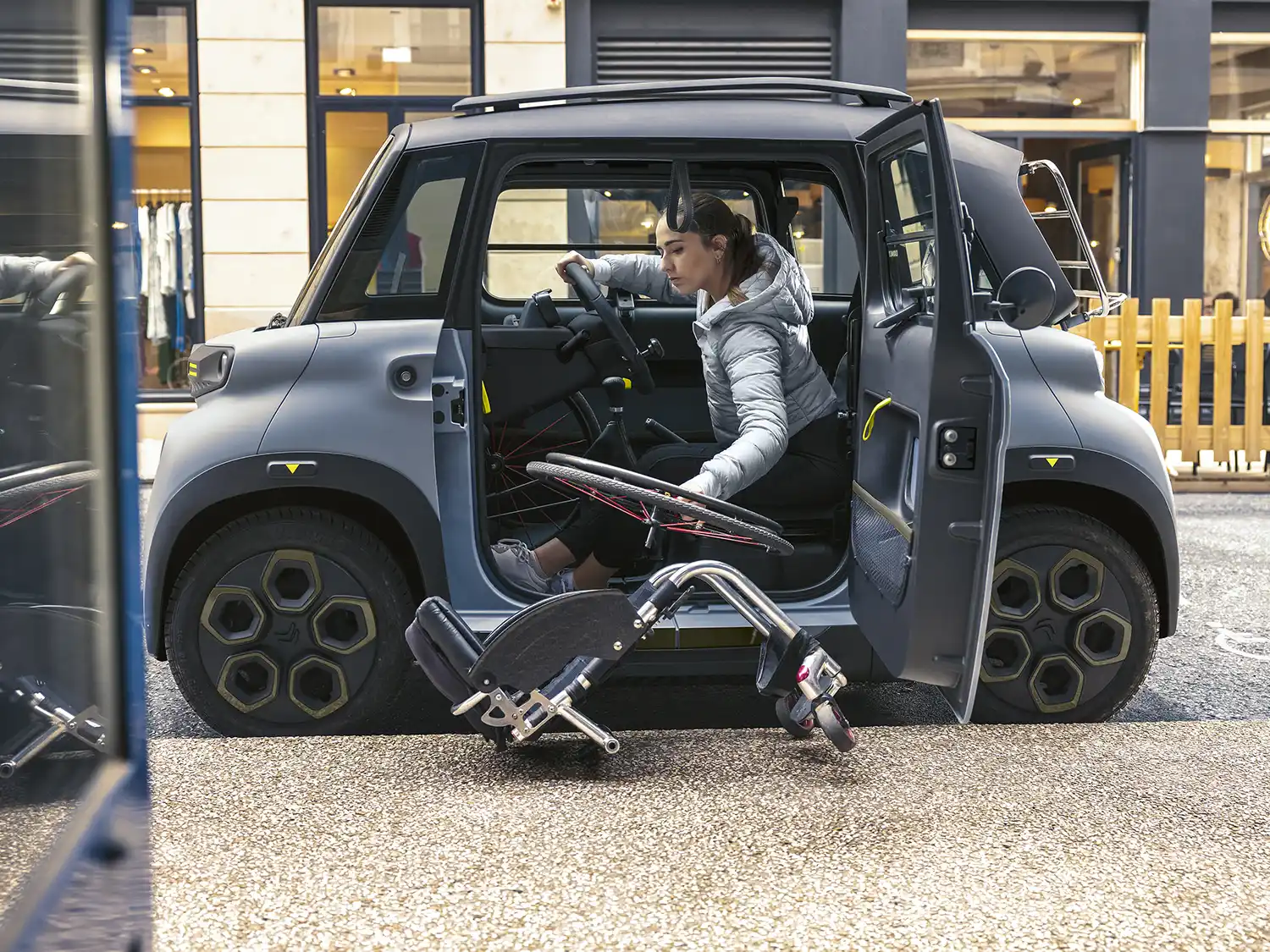
Citroën presents the “Ami for All” concept, a project developed in conjunction with PIMAS, an expert in the conversion of vehicles for Persons with Reduced Mobility. This project will be shown at the Autonomic trade fair in Paris, being held at the Porte de Versailles exhibition center from 6 to 8 June 2023.
This prototype is designed to be driven by Disabled People who no longer have the use of at least one lower limb, particularly those in wheelchairs. It incorporates technical developments such as an increased door opening angle, equipment for the transfer from wheelchair to seat (board and straps), mechanical and manual control for accelerating and braking, a knob on the steering wheel to make driving easier, and a clever solution to transport the wheelchair inside or outside the cabin.
With “Ami for All”, Citroën gives back independence to those who have lost it, with an affordable electric mobility solution that does not require a driving licence. “Ami for All” offers an easy way to lead an active life and integrate socially without depending on a third party to accompany them or using public transport with its unpredictable timetables and access.
“Ami for All is perfectly in line with the Ami philosophy: to offer a practical response to access to mobility for all. Ami has reintroduced ease of movement to micro-journeys and given more independence to teenagers, the elderly and those without a driving licence. We are delighted to present this technical solution to support the mobility of Disabled People and we are working to make this project achievable in the short term.” Thierry Koskas – Citroën CEO

ACCESSIBLE AND PRACTICAL, “AMI for ALL” BRINGS MORE AUTONOMY
Because of its accessibility and ease of use, “Ami for All” is unrivalled in what it offers to Disabled People. It is a real factor in social integration, giving mobility and independence to people who are currently restricted in their daily lives.
An appropriate response to a solution that is currently lacking
“Ami for All” is a particularly effective way of giving back their independence to Disabled People, especially those who have lost the use of their legs and need a wheelchair. This concerns 1% of the world’s population. It is a safe, comfortable, compact and agile solution that allows them to get around from the age of 14, even if they don’t have a driving licence.
Genesis
The genesis of this project is symbolic: it comes from the Star*up programme, an idea incubator enabling Stellantis employees to submit their innovative ideas. If the proposal is selected, the employee has the opportunity to take part in the business accelerator, where ideas can become reality. The meeting between Christophe Lapeyre, the man behind the project, and Citroën around a common vision happened very naturally.
“The project I shared in 2022 was to offer a turnkey solution for adapting disabled people’s journeys to the electric challenge. The idea came to me after observing pupils at my step-son’s high school being dependent on transfers in adapted vehicles while their classmates enjoyed total freedom. In addition to the societal challenges, identifying technical and industrial solutions was a particularly motivating challenge. With Citroën, I immediately found a sponsor who believed in me and supported me in the development of the project” – Christophe Lapeyre, ”Ami for All” project leader.
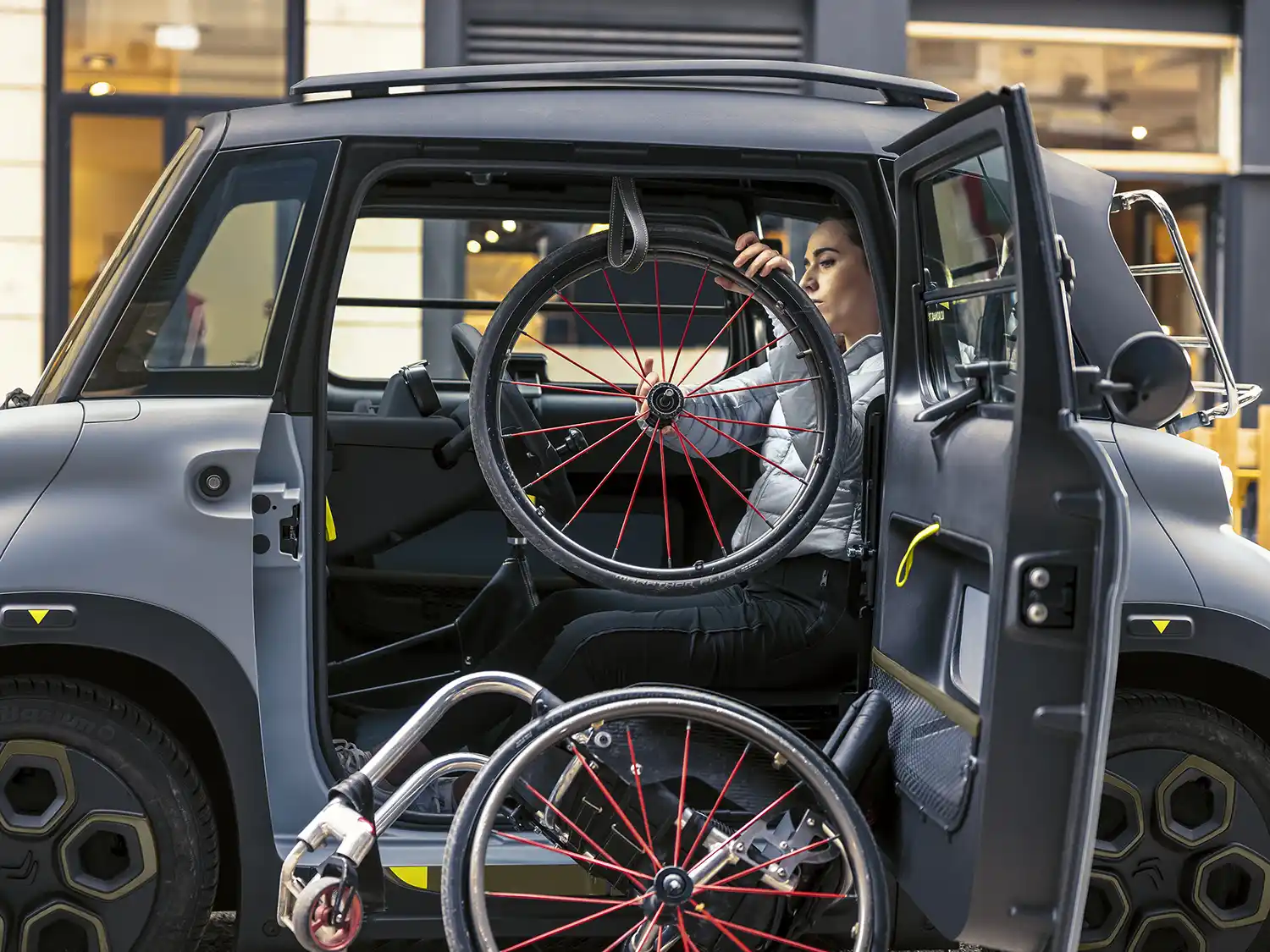
Ami: the ideal mobility solution
Ami is the ideal tool for improving daily life and contributing to greater independence. It encourages Disabled People to drive actively, within a controlled budget, and avoids the complexity of adapted transport or public transportation, so that they can remain active participants in their own mobility and enjoy direct autonomy.
Its compact size makes it agile and easy to park and ensures there’s plenty of room around it to manoeuvre a wheelchair. Its also makes it easier to climb into. With a speed of up to 45km/h, it is easy to handle and its range of 75km makes it perfect for everyday use. It is stable and closed, guaranteeing greater safety and comfort.
“Ami for All” is as easy to use as any other everyday electrical appliance. It requires no special charger and recharging is quick and easy. Its 5.5 kWh lithium-ion battery, housed flat under the floor, can be easily recharged via the on-board electric cable located in the passenger-side doorway. Once the cable is plugged in, it takes less than four hours to fully charge using a conventional 220 V socket.
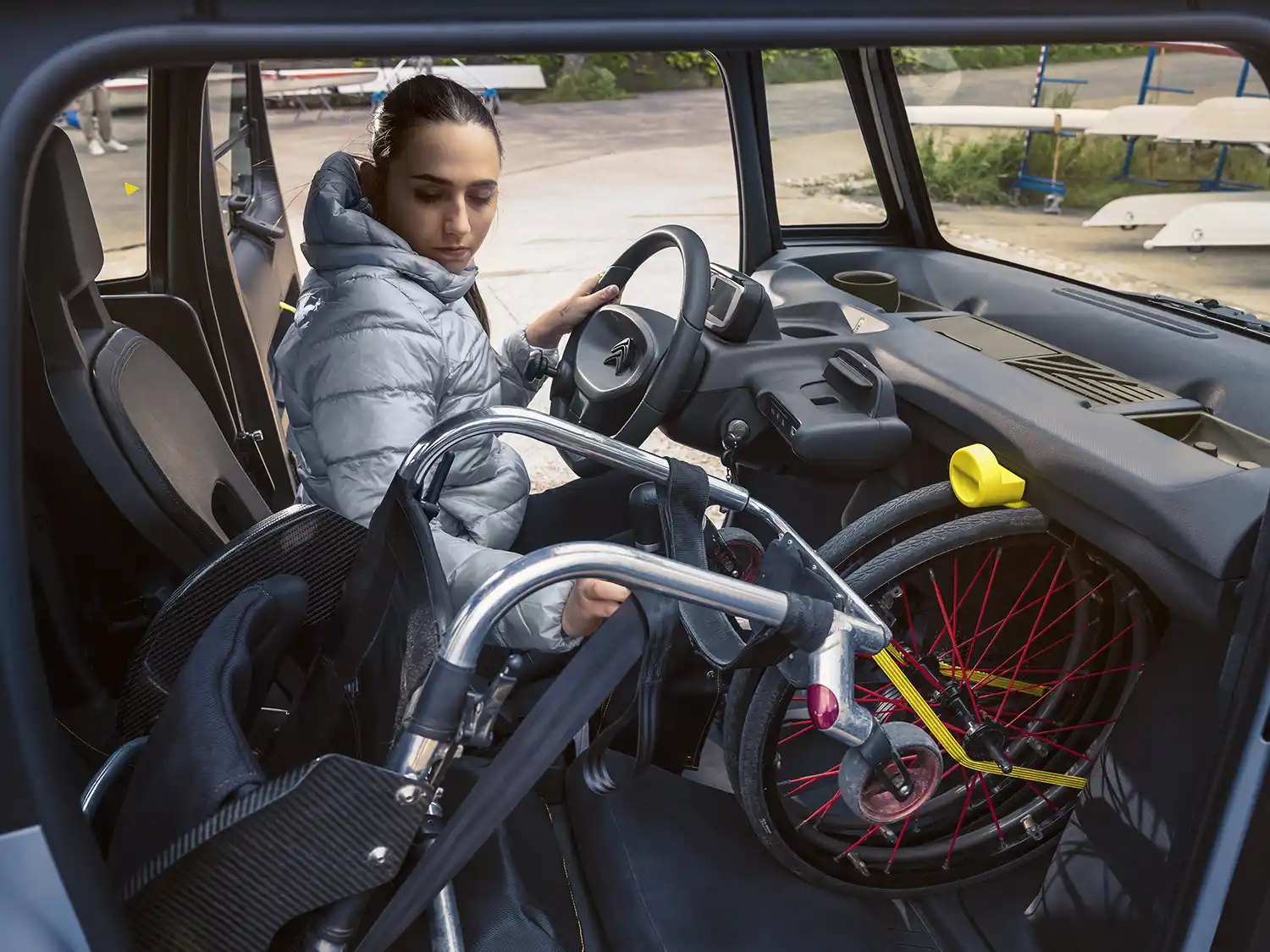
FUNCTIONAL, SIMPLE AND PRATICAL FITTINGS FOR DISABLED PEOPLE
The adaptation of “Ami for All” for Disabled People is standardised and easy to install, whatever version of Ami the customer chooses. It was designed and built in conjunction with PIMAS, a leading company in the conversion of vehicles for Persons with Reduced Mobility.
The design of “Ami for All” was based on the Ami spirit of pragmatism and ingenuity, without superfluous equipment. It is based on a mechanical adaptation of the passenger compartment so that people with leg impairment can easily access the cabin and drive. This involved reworking the accessibility of the driver’s door, the on-board transfer aid, moving the accelerator and brake controls to hand level and adapting the interior space to accommodate a dismantled wheelchair.
On-board access
Ami is naturally an interesting solution for on-board access. Getting in and out is easy thanks to a wide door and its opposite opening on the driver’s side (rear-hinged). The angle of the door hinge has been increased to allow customers to place a wheelchair parallel to the threshold of the passenger compartment after opening the driver’s door. A removable, retractable shelf is then unfolded to allow the person to be transferred independently from the wheelchair into the passenger compartment. Customers can move from the wheelchair to the driver’s seat thanks to a strap fixed to the top of the interior door frame. The operation only takes a few minutes.
Driving
Once on board and ready to go, the driver has a knob on the steering wheel to make it easy to grip and benefit from “Ami for All’s” excellent handling. In place of the usual pedals for the 6-kW electric motor, an intuitive mechanical lever has been added for manual control of the accelerator and brake pedal, which you simply pull or push. We can note that the pedals remain operational.
Storage for the wheelchair
There are two ways of transporting the wheelchair. It can be placed in the passenger compartment, taking advantage of the large storage volume in front of the passenger in Citroën Ami. The driver then removes the wheels from the wheelchair and secures them in the footwell using a specially designed strap. The wheels fit perfectly into this storage space. The folded wheelchair fits on the passenger seat. It is secured by an additional and specific seatbelt. This configuration makes it possible to travel independently.
If a passenger is also present, the wheelchair can easily be placed in a dedicated space at the rear of “Ami for All”, thanks to an aluminium luggage rack. The wheelchair will then have to be installed by the passenger and can then be covered by a protective tarpaulin. This frees up all the passenger space in the cabin. Instead of being dependent on a third party, the “Ami for All” user becomes himself a companion for everyday journeys and social occasions.
Since its launch in April 2020, the Citroën Ami has been a surprise on the micro-mobility market thanks to its ingenious conception. Ami is easy to handle because it is ultra-compact at 2.41m long. Electric, it can be recharged in four hours with a simple 220V socket, just like any other household appliance. Ami was created to be accessible to as many people as possible: it can be driven by 14 year olds and 77 year olds alike, is affordable and has low running costs. Sitting firmly on its specially designed 14” wheels, located at all four corners for easy handling, Ami is 2.41m long, 1.39m wide and 1.52m high. It promises everyday agility, as well as easy parking thanks to its ideal turning radius (7.20m).
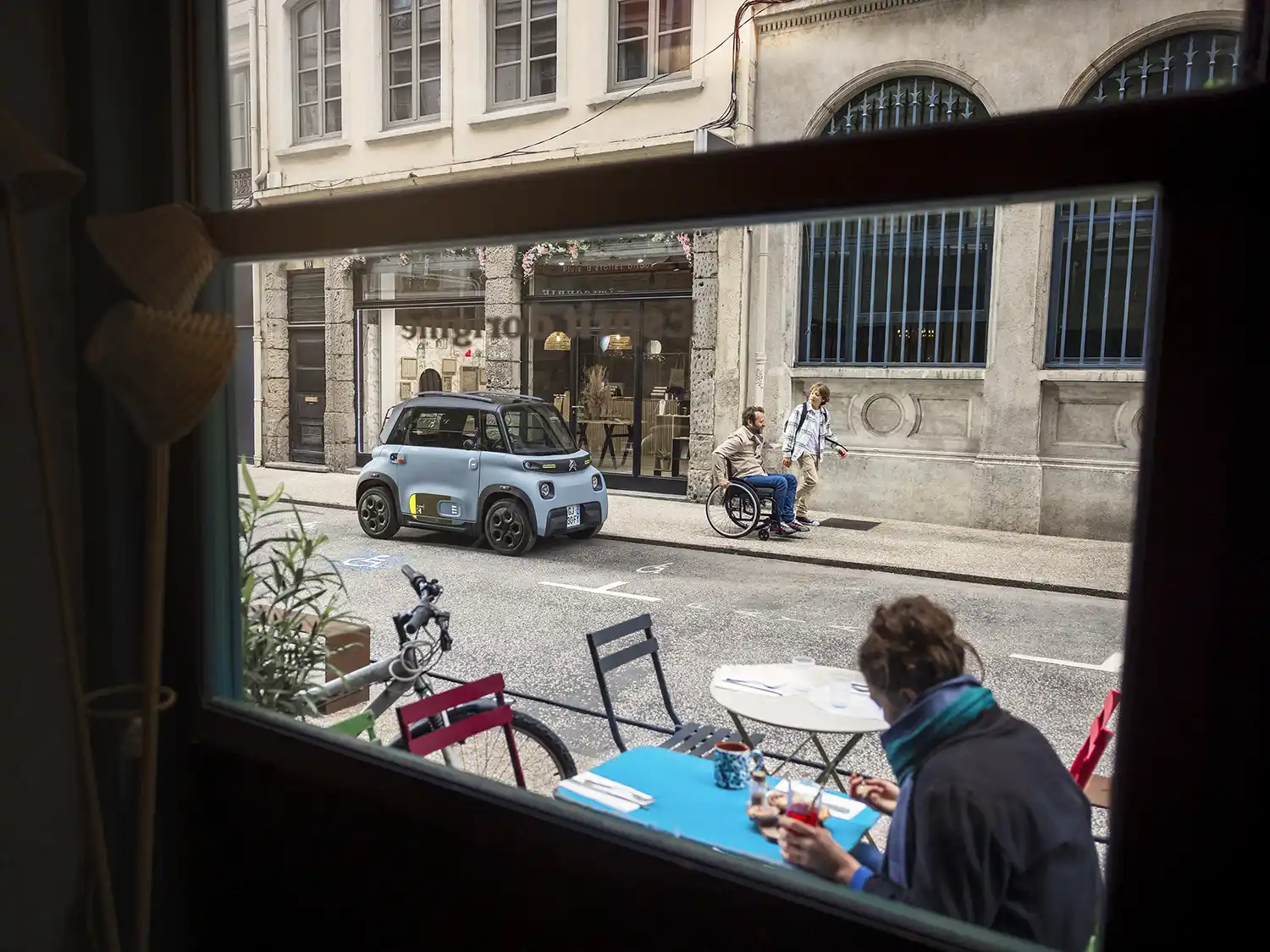
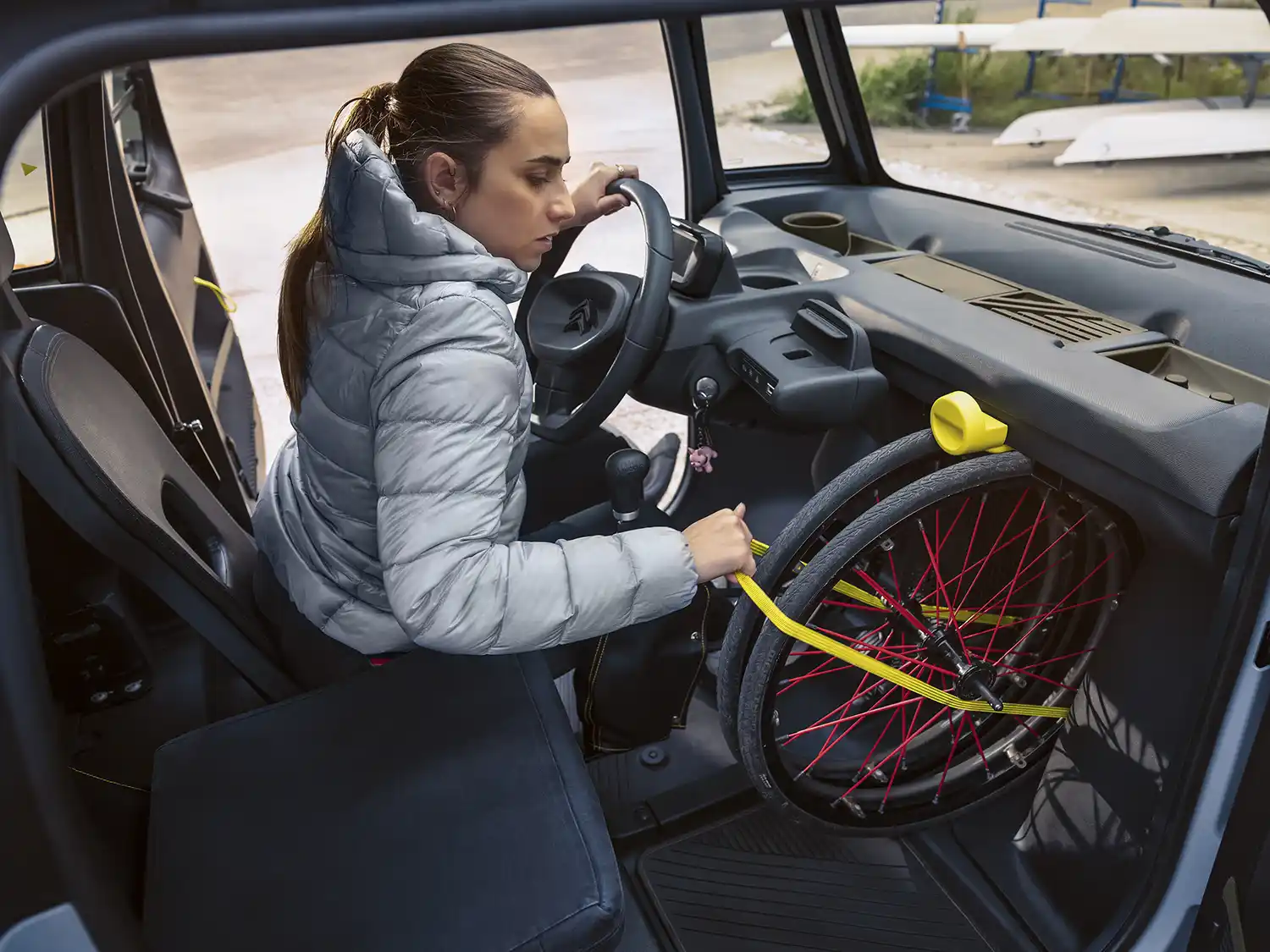
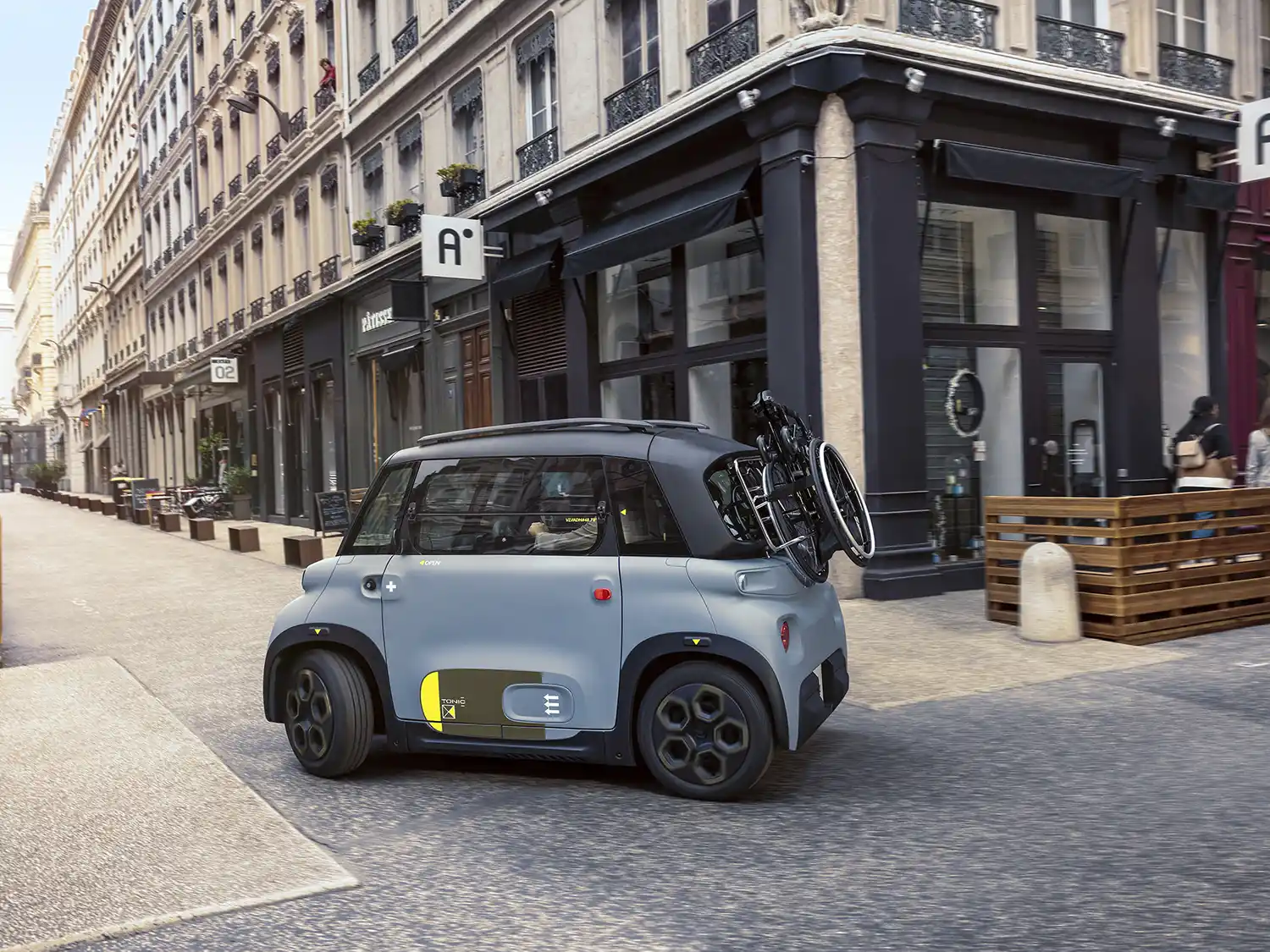
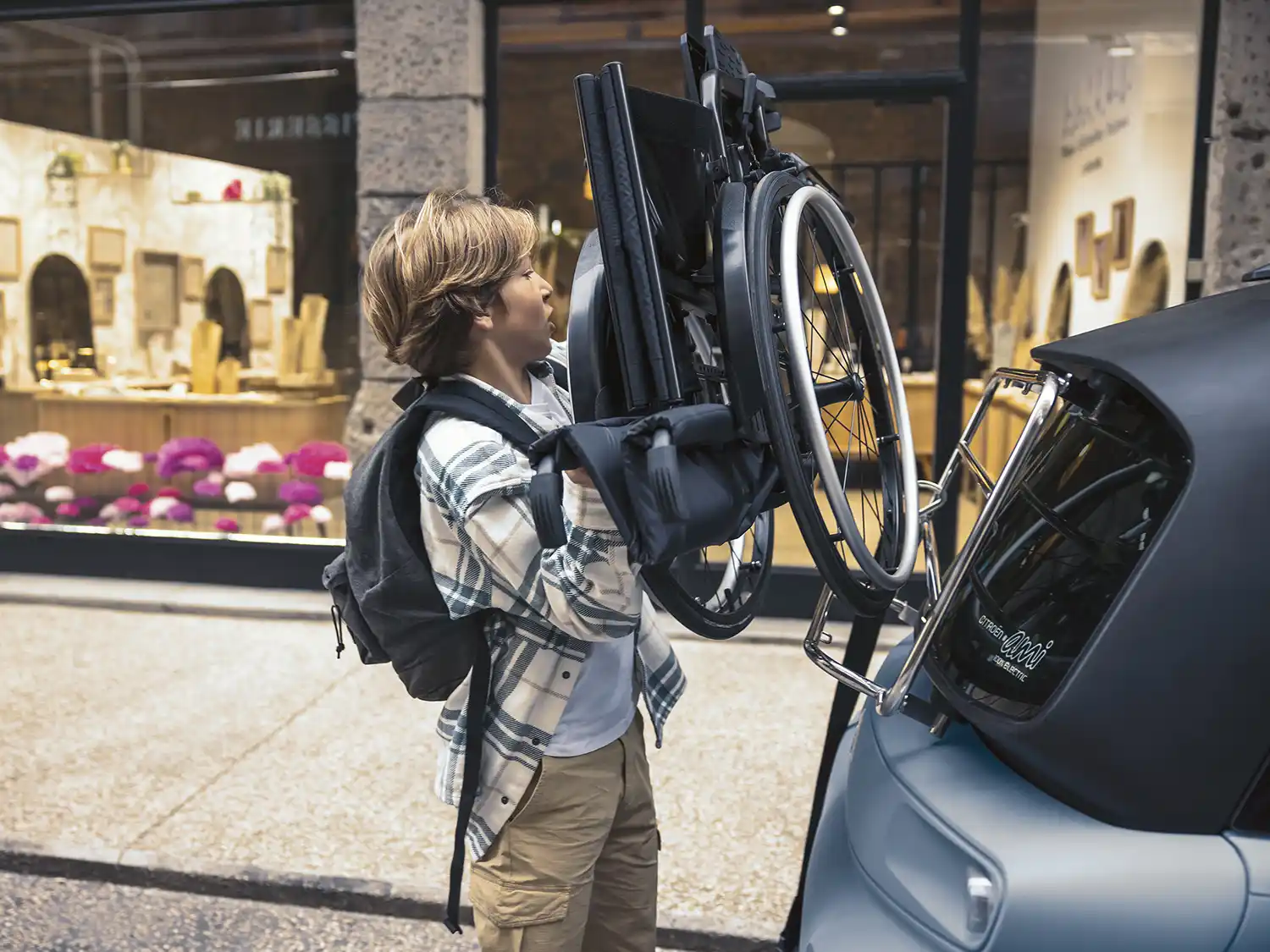

The post Citroën “AMI For All” – A New Mobility Solution For People Lower Limb Disabilities appeared first on Wheelz.me-English.




